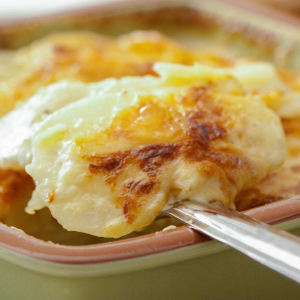Yesterday, we looked at some of the better-known dishes that make French cuisine what it is – in many ways unique and in others in debt to the traditions of other cultures that touch the Mediterranean – especially Italy. Today, we’ll look at some iconic French specialties…
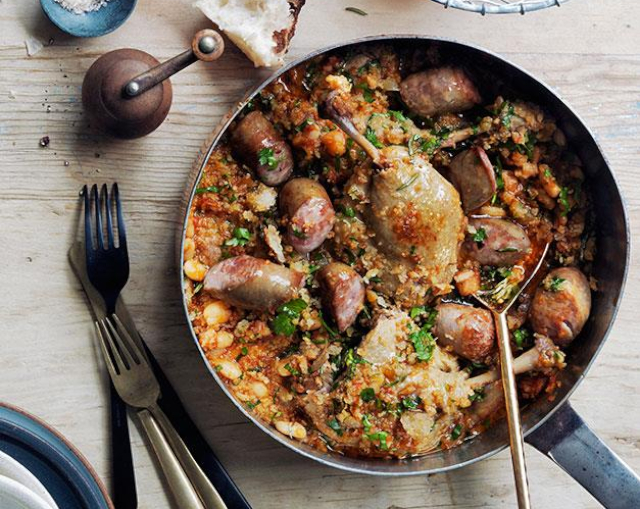 Classic Cassoulet: A unique bean-based casserole with lots of stuff tossed in
Classic Cassoulet: A unique bean-based casserole with lots of stuff tossed in
– which may be the most underratred menu item in French cuisine!
On the menu today…
Soufflé: The classic recipe features cheese, but you can actually flavour your soufflé with just about anything you want. The process is simple: Make a medium-thick béchamel (white) sauce, whisk in the egg yolks one at a time, then fold in beaten egg whites carefully, gently, so as not to beat the air out of them.
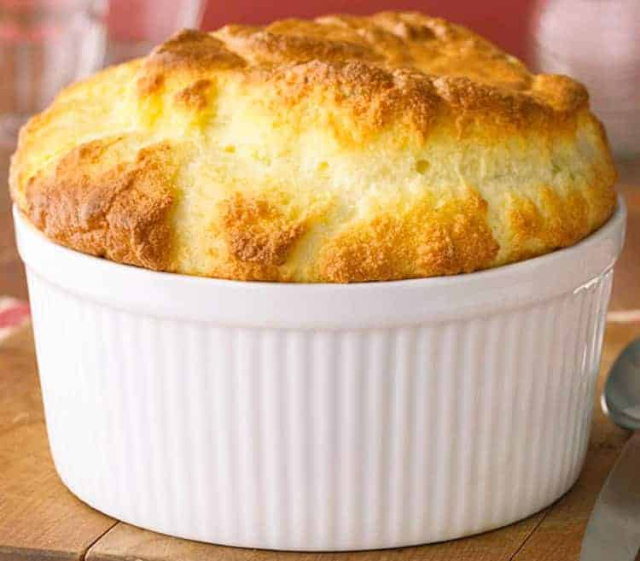
The secret of a perfect soufflé is to beat the egg whites to a very stiff consistency. The most common causes of heavy, fallen soufflés are under-cooking, and under-beating the egg whites. There are other tips and tricks to making a great soufflé; this blog post covers them all!
Cassoulet: This is a hardy peasant-origin dish that celebrates the pig. (See photo, above.) In fact, several different incarnations of pork are traditionally used, including shoulders, shanks and sausages. It also embraces the duck, often incorporating duck legs. The base of the dish is white beans and a combination of onions, carrots, tomatoes and herbs. Need I mention garlic? There’s hardly any French dish (except, maybe, the soufflé, above) that doesn’t call for it! It’s all baked together in a big stoneware casserole, low and slow, at 300 F for 3 hours. Near the end of the cooking time, raise the oven temp to 450-500 F to crust the top.
Ratatouille: Here is a beautiful looking as well as an amazing-tasting summer vegetable dish… Use fresh tomatoes if at all possible! The recipe also calls for zucchini, eggplant, bell peppers and onions, garlic, and Herbs de Provence.
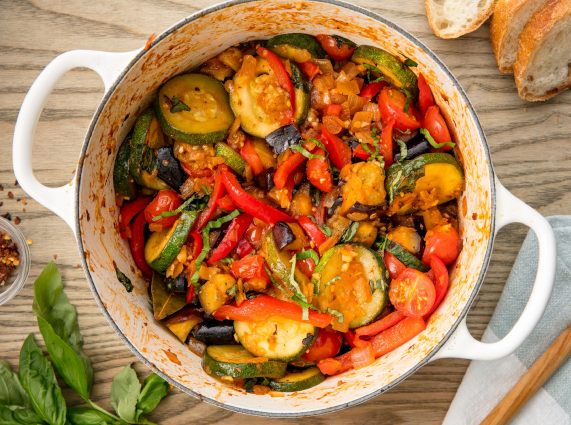
Cut the large veggies into 2 in. / 5cm pieces. The dish is made in a large Dutch Oven , baked covered for 1.5 hr. in a 350-375 F oven. Be prepared to be knocked over by the unmatched herby aroma when you lift the lid!
Sole Meunière: A whole Sole fillet is dredged in a mix of flour, salt and pepper, and pan fried for a minute or so each side in lots of bubbling butter. (Don’t let the butter brown!) Serve with lemon quarters for squeezing, and garnish with fresh parsley. It’s as simple and luscious as that: the fish speaks for itself…
Gratin Dauphinois: The original Scalloped Potatoes! (See photo, top of page.) It’s traditionally cooked with milk and cream and without cheese, but I always add some white melting cheese (like Cheddar or Jack) anyway, to give it more body and flavour. I know one Qubecoise cook who adds small cubes of smoked ham hock for extra flavour, though that’s not traditional, either. The secret to this dish is to bake it long enough for the potatoes to become fork tender and the sauce to thicken to a rich, creamy Béchamel-like consistency, with the help of the potato starch.
Flammekueche: Sounds more German than French, and there’s a good reason for that! It comes from the French principality of Alsace on the German border. Origins aside, this dish is essentially a French version of Pizza that uses a small, oblong piece of flatbread as a base, covers it with a thin glaze of crème fraîche, and tops it with bacon morsels and chopped or slivered onions.
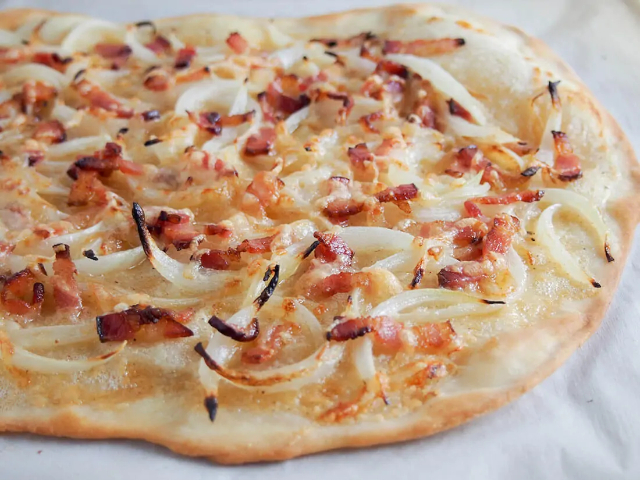
Just bake it in a 400 F oven until the bread turns golden brown around the edges. Or you can use a simple yeast-raised bread dough and bake until the flatbread is cooked through. This is the traditional recipe. These days, some folks dress up this classic lunch/snack treat in a whole bunch of different ways. You can too!
Escargots: You’ve probably heard of this French delicacy: snails with garlic. But don’t let the thought of plain, naked snails put you off! It’s a simple dish to make, using only a few ingredients: snails, butter, shallots, garlic, white wine, cognac, nutmeg, parsley, salt and pepper. The secret is to let everything but the snails steep together overnight in a covered glass bowl before assembling the dish. Spoon about 1/2 tsp. / 2.5 ml of the butter mixture into each snail shell, over the snail. arrange the snails butter side up in a stabilizing base of coarse or sea salt. Bake in a pre-heated 400 F oven for 10-12 minutes. Serve with lots of fresh French Bread on the side to sop up the now-liquid butter mixture. A nice first (fish/seafood) course to a fancy French meal!
Bistec Tartare: We’ve all herd of Steak Tartare, I dare say, but few of us have dared to order the raw minced beef dish even in the best, most spotless French restaurants.
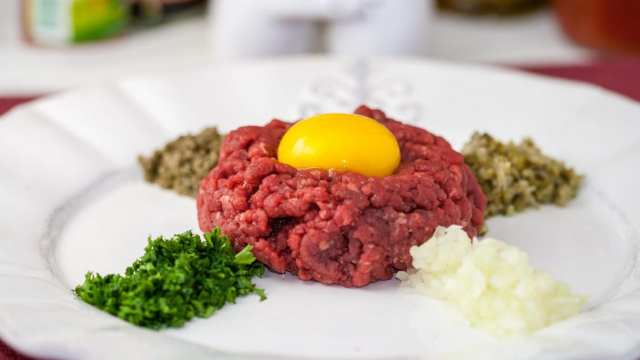
A fancy presentation of Steak Tartare: With the anchovies,
parsley, onions and capers on the side…
Along with the minced lean meat, mix in chopped capers, chopped red onion, anchovies, Dijon Mustard, hot sauce and Worcestershire sauce, and egg yolks (for a binder; raw egg yolks are not usually recommended for human consumption, but you can serve them in Bistec Tartare as long as the ingredients are well chilled/refrigerated, and you prepare the dish immediately before serving it.) The classic presentation always includes a fresh parsley garnish. With all the other strong flavours in there, I guarantee you’ll never even detect the slightly metalic flavour of raw beef!
A note on French must-have ingredients…
As you already know, Garlic is perhaps one of the most essential ingredients in French cooking. Wine comes in a strong second. Onions, garlic, shallots and leeks make a strong showing, as do the other two members of the famous French aromatic trilogy: Celery and Carrots. Potatoes often show up (mainly in the north), as does rice (especially in the south). But the queen of French cuisine has to be Butter. No question. You may think that some French recipes call for too much butter, but don’t be tempted to cut back. The result just won’t be the same!
Et voilà, encore!
That’s just a sample of the classic French dishes you may not have seen on mainstream French menus. I recommend 44 Classic French Meals You Need To Try Before You Die as a starting place for your personal exploration of great French cookery! There are thousands and thousands of French recipe websites. Googke them to your hearts content!
Tomorrow, we’ll take a look at some of the most famous (and infamous) French desserts…
~ Maggie J.

